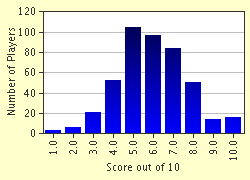Quiz Answer Key and Fun Facts
1. What does GPS stand for?
2. When was the first GPS satellite launched? This might be earlier than you'd think...
3. How many GPS satellites were there when the system was originally set up?
4. What is the minimum number of GPS satellites you need to receive information from in order to get a fix on your horizontal position?
5. What kind of information does a GPS satellite transmit to the GPS receiver?
6. A GPS receiver determines its location by:
1) Receiving information from a satellite on its location and what time the signal was sent;
2) Comparing the difference in time between when the signal was sent from a satellite and when it was received by the receiver;
3) Using that number, and the speed of light, to calculate how far away the satellite must be;
4) Using this information from several satellites to pinpoint the exact location
5) Converting this to the coordinate system of choice
7. How is DGPS different from normal GPS?
8. What is the biggest source of error for a DGPS?
9. You see that your GPS unit is WAAS-enabled. What's so great about WAAS?
10. About what is the accuracy for a handheld GPS (with DGPS and WAAS) you might go out and buy?
Source: Author
pu2-ke-qi-ri
This quiz was reviewed by FunTrivia editor
crisw before going online.
Any errors found in FunTrivia content are routinely corrected through our feedback system.

